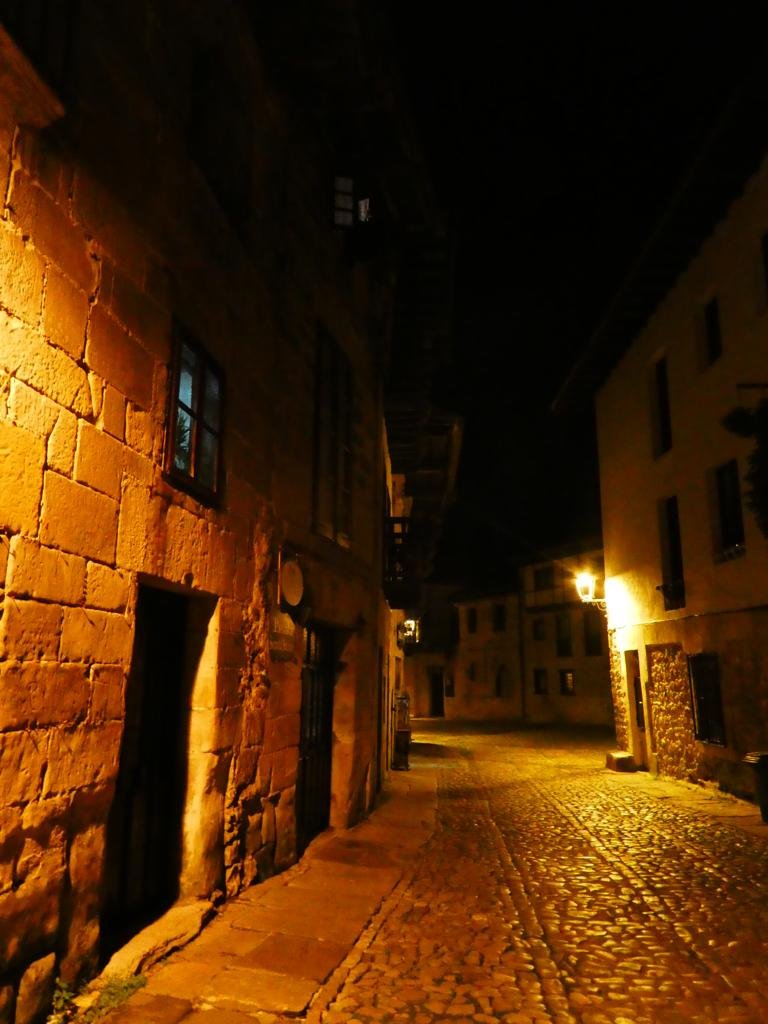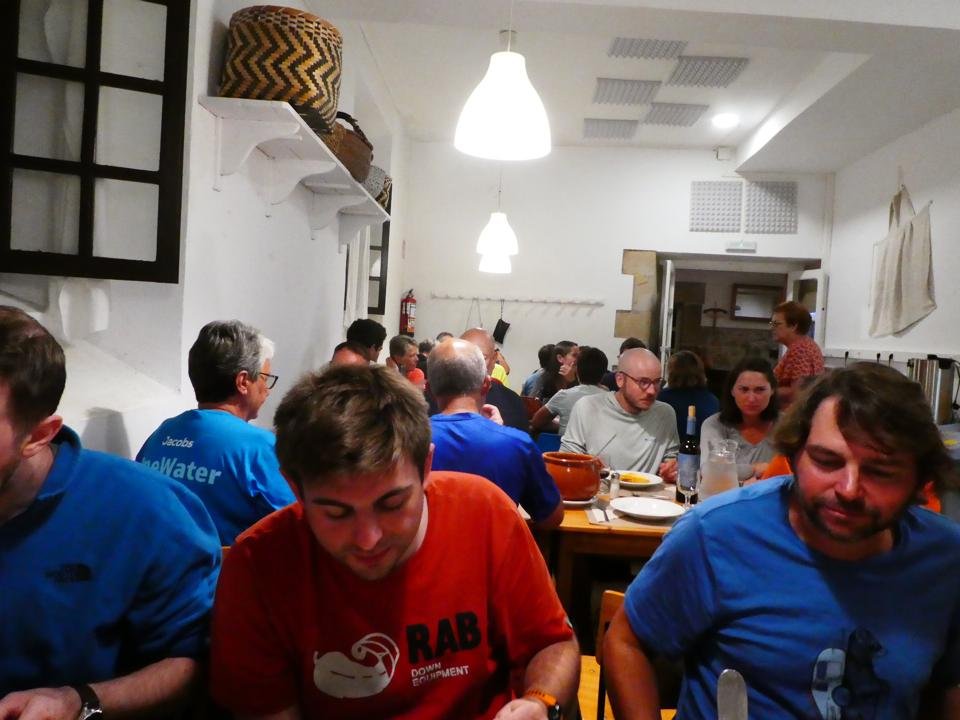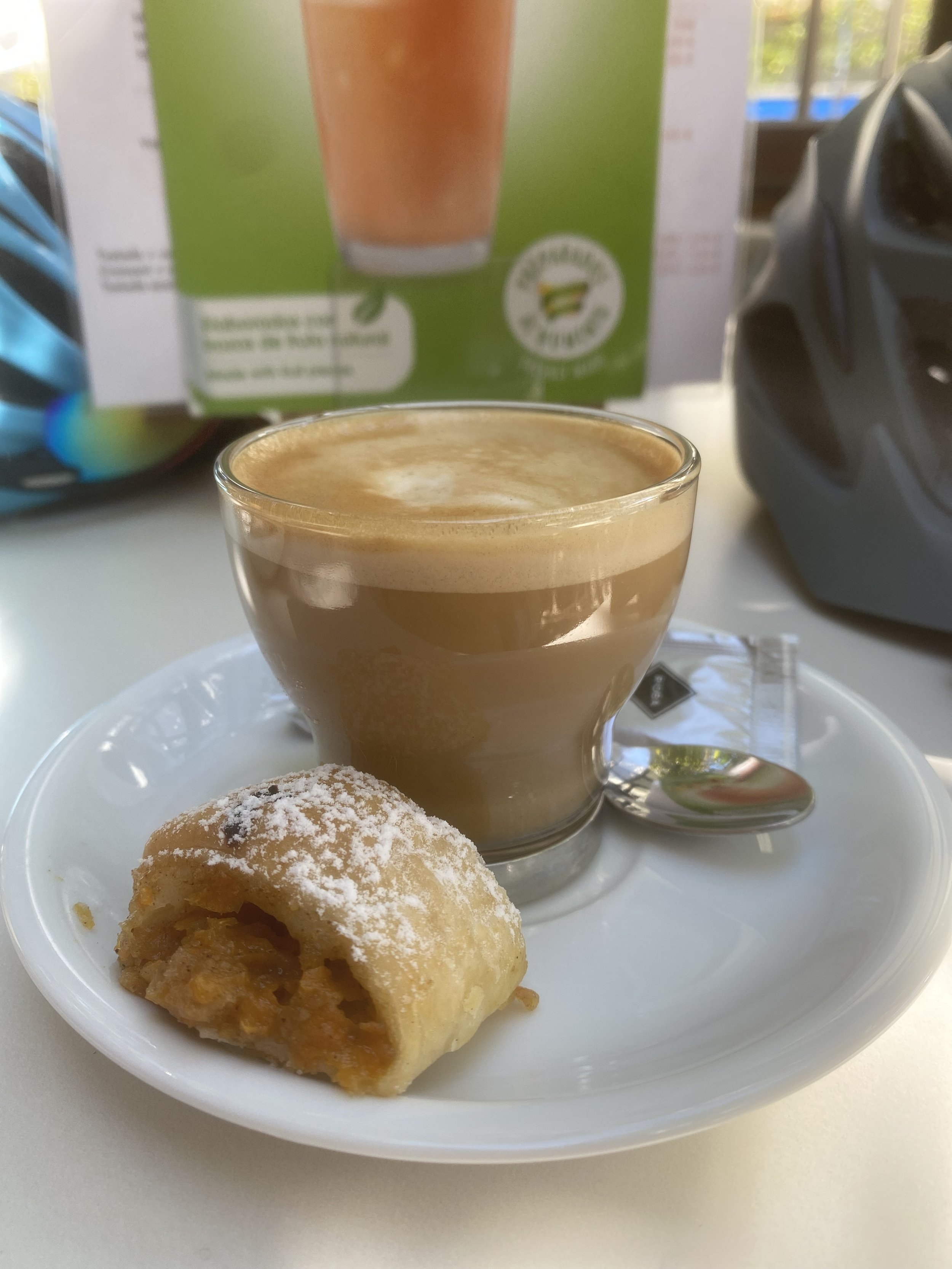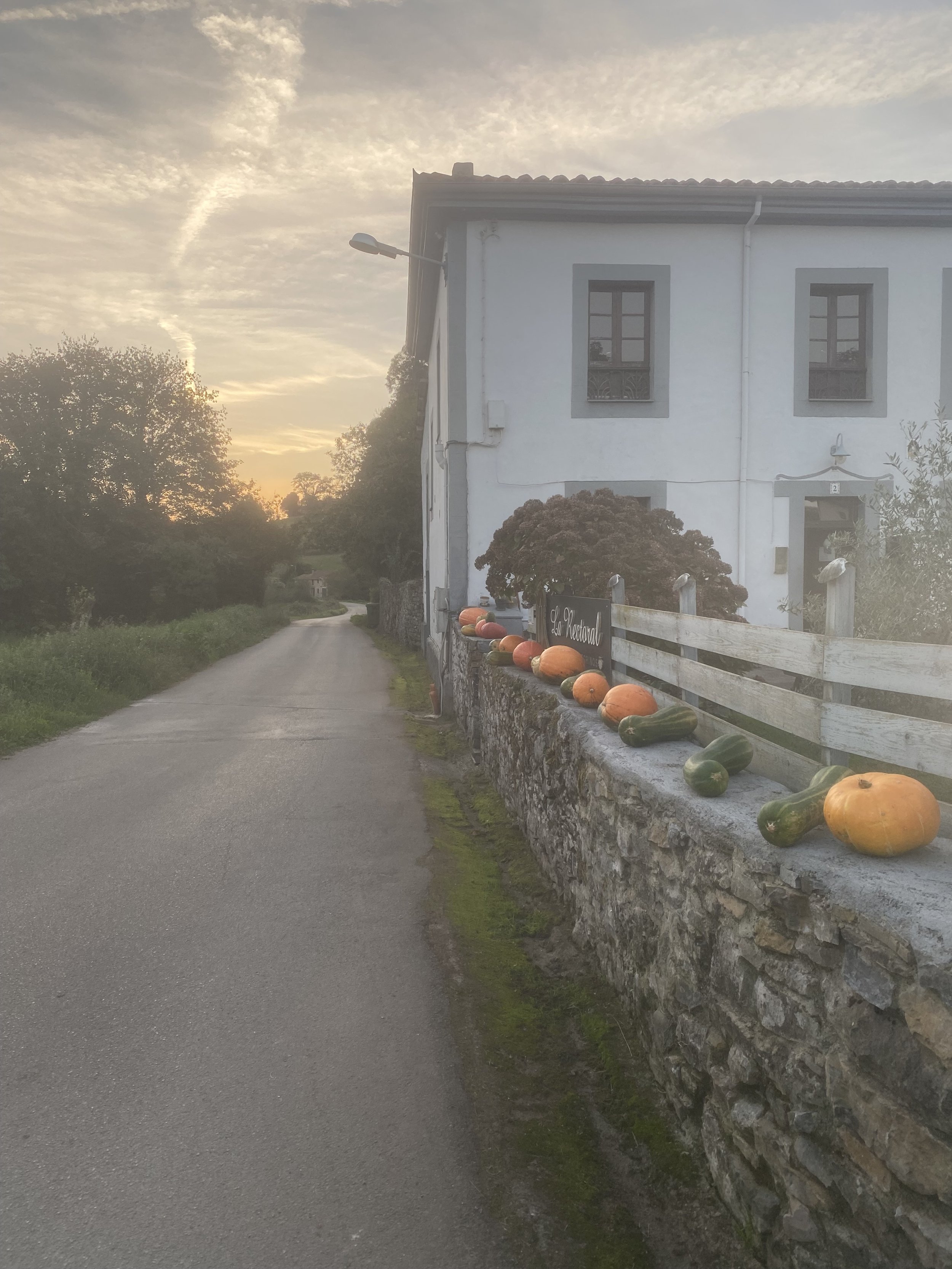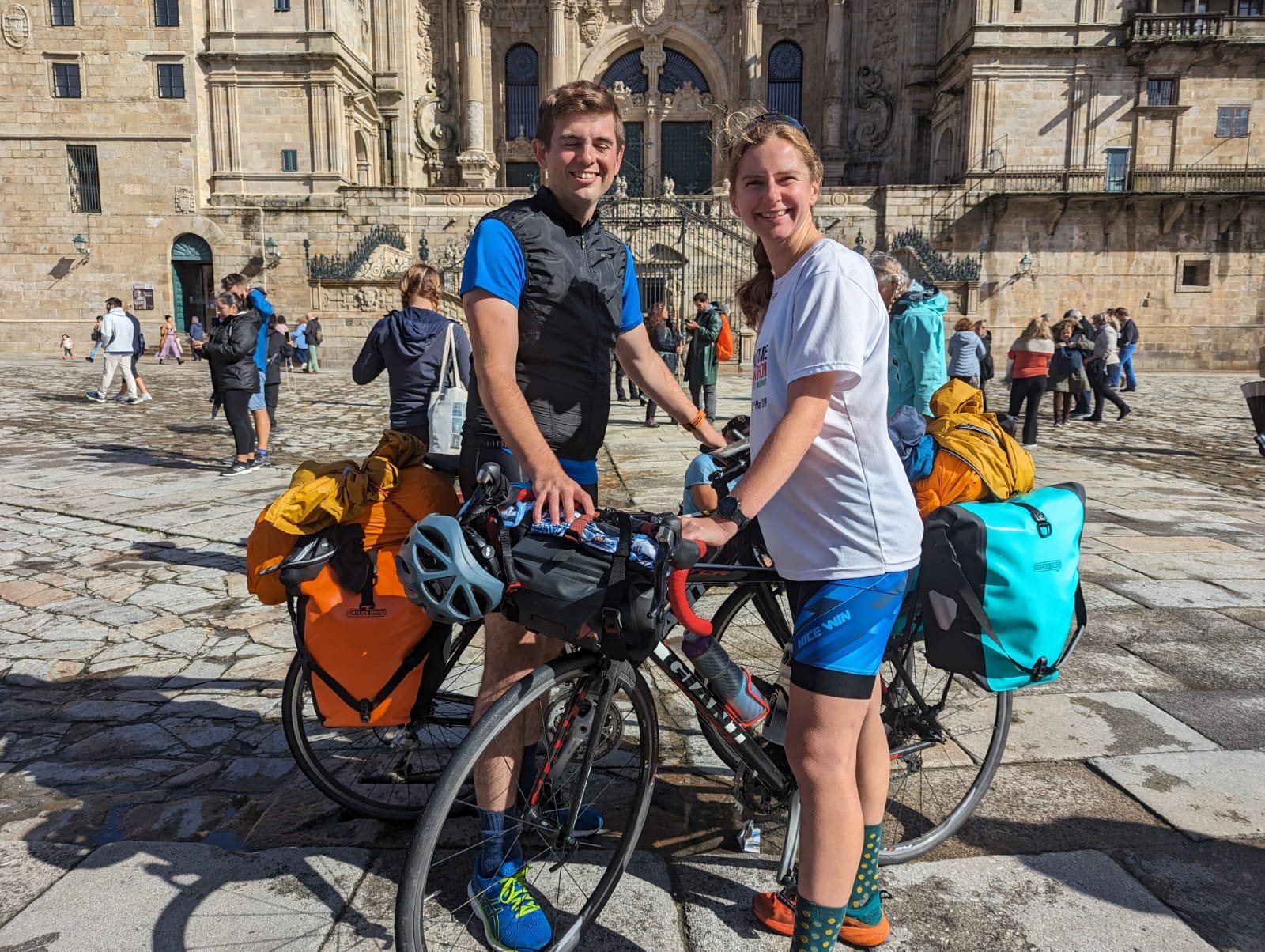What does a pilgrim eat?
This is the third of The Bikepacking Chapters as I cycle across Spain with my partner.
Spat out of the mouth of a gaping Brittany Ferry onto Santander's dock in the rising Spanish sun, we knew we were in for an adventure. An unexpected bike path coaxes us out of the city port and up into the hills of Cantabria.
This is the Camino del Norte. The Camino, a series of pilgrimage routes across the world to Santiago de Compostela, has been taken for over 1,000 years. Translating as 'The Way', wanderers journey to see the resting place of St James.
The route in question
That first night we headed to Santillana del Mar. Its misty cobbled streets eerily reflects its medieval past. Our first night on The Way, we decided to stay in an albergue - a hostel for pilgrims.
Santillana del Mar by night
Arriving, heaving our packed bikes over the frame of the heavy wooden door, the menu for that evening's pilgrim's meal greets us. This was something that I had heard about. A simple meal prepared by an albergue or restaurant to satiate wandering soles/souls.
The menu for our pilgrim’s meal
Bunk beds procured and showers embraced, we take our places alongside our culinary compatriots for the evening - an American couple, a mother and daughter from Oban, Scotland, and a lone Spaniard, who took a deep breath on realising he'd ended up on the English speaking table.
Volunteers from the albergue bring over a deep terrine of butternut squash soup. Wine pouring, soup ladling, conversation meandering between route choices, dogs waiting at home for our return, and bets on the heat level of the chili oil.
The butternut squash soup
I'm struck by how quickly stories are shared as food is too. Especially here where a group of people are brought together who have all chosen to take on the physical and mental challenge of pilgrimage. Their reasons may be personal, but we share a route, and sometimes a table, with countless others.
This is different from a hiking refuge in the Alps or a bothy in the Highlands. Here there is a sense of the personal transformation taking place over time and kilometres. A gentle recognition of vulnerability, whether known or unknown.
Our soup bowls whisked away by the every attentive volunteers are replaced by chicken in white wine sauce with rice. It feels strange to take photos so I grab a couple, badly, just to remember the feeling of the room. Steam from the kitchen envelopes our damp hair, flip-flopped feet and musty, crumpled, t-shirts.
The pilgrim’s dinner
Natillas is a new dish to me, a sweet custard topped with cinnamon. Little terracotta pots are bartered for wine across the table as the sweet-toothed and the alcohol drinkers exchange their pilgrim meal winnings.
It's only half eight when we finish. The scrape of chairs pushed back at the other end of the room bringing our nattering to an end. As cyclists on the route, we don't expect to meet many of the other pilgrims again.
The ritual of mealtimes brings a certain stability to an experience that is built on a balance of routine and improvisation. Where the availability of albergues dictates the routes of hikers, with the bikes and our camping gear the Camino is our oyster.
Constantly craving the next bend, most days are powered by baguettes, cheese, chocolate, and end of season peaches. The odd 'rogue purchase' brings some hilarity to our day - a custard apple (7/10), mixed fruit yogurts (3/10), bakery empanada (8/10).
Coffee breaks in local bars are our excuse to rest outside on plastic chairs, usually the reserve of the smoking elders of the town. Our laden bikes wait judgmentally to carry us on.
A typical coffee break for us
There is something telling that there is an increase in the number of farm to table restaurants. I'm all for supporting small producers, cooking seasonally, bringing new dishes to unsuspecting audiences.
But it strikes me that it's only where the table, or the diners, are usually physically or mentally 'far' from the farm. On the Camino, though, there is no fancy typeface marketing, bandana-ed kitchen brigade or sommelier summoned bottles.
When thousands of people move in their own time, in their own way through the paths of the world, the farm comes to their table. It is offered up to them as the most available, and therefore often the cheapest, produce. The story of the land becomes the butternut squash soup of their albergue starter, the wine in their chicken and rice main, and the eggs in their natillas.
Squashes lined up outside an albergue
I was, I must admit, a little disappointed to have not met more people embarking on a religious pilgrimage when we first started on the Camino del Norte. Whilst neither of us are particularly religious, we both grew up in religious families. The Camino felt a little like a rite of passage.
About 8 days into our journey, some Argentinian pilgrims told us about the pagan connection to the Camino del Norte. Santiago de Compostela wasn't the end of the road, but Finisterre, otherwise known as finis terre, 'the end of the world.' Folk moved across the continent, sometimes even bringing their dead to this furthest west point.
Inevitably, there are connections between the Christian and the pagan. It's a reminder, though, that the journeys taken are not just whether we walk or bike, but how we move. Sharing the space with those who journey today, in the centuries past and the years to come.
Slowing down, cycling along lanes that, at times, smelt like cheese, apple juice, smoked meats reminds us that, just as we offer our story to the Camino, so the Camino's landscape comes to meet us.
Outside Santiago de Compostela cathedral


